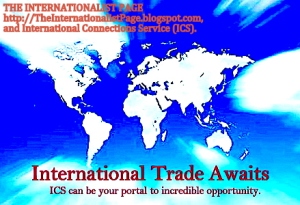Working with EXIM Bank is difficult -- but it has a wealth of resources for business capitalization if you understand the written (and unspoken) rules of the application game.
Following are a series of hyperlinks to specific areas of interest in financial assistance and programs for U.S. exporters, multinationals, small businesses, and international project developers and promoters. These hyperlinks have been extracted from The Chairman's Report [Export-Import Bank Of The United States, Volume 9, July 2012].
This information is best utilized by clicking on a particular link, reading what you need, and then returning to this site. Then repeat the process for each of the other links of interest to you. When you have finished, I would greatly appreciate if you would read my addendum at the end of this article post regarding small to medium-sized business (SME) capitalization.
Portions of this article have been incorporated in my posts on the following blogs in the Global Edge Media Blog Constellation, all of which are always recommended reading:
The Internationalist Page Blog
The Capital For Business Growth Blog
The International Trade, Financing And Investment Blog
EX-IM BULLETIN LINKS
Commentary:
It is important to think about your entity's eligibility for EXIM financing. If fact, you may consider engineering the structure of your business (as a proposed EXIM client) to one or more of the attributes as set forth below in order to increase the probability of obtaining a favorable response:
1) The applicant should be a small to medium-sized enterprise domiciled in the US;
2) The enterprise should be controlled by US management and shareholders;
3) The enterprise should have a pipeline of transactions (perhaps confirmed irrevocable purchase orders from prospective B2B overseas entities) or a defined contractual project;
4) Minority Business Enterprises (MBEs), Women's Business Enterprises (WBE), and Disadvantaged Business Enterprises (DBEs) tend, informally to receive a preference from EXIM, as well as from the SBA and elsewhere;
5) Have optimistic but attainable projections of income coming into the United States as a result of the business increment financed with EXIM's assistance, as well as any good news about domestic jobs creation. Interestingly, if you are outsourcing part of your supply chain and labor to another country, if you can legally say that the end product is "assembled in the US" you may be fortunate enough to get both the inherent price arbitrage advantage associated with outsourcing, as well as export financing.
Sidebar: If your business is owned by, or will be employing returning US veterans, make it abundantly clear in your presentation. Mentioning the Wounded Warrior Project and other such humanitarian and charitable initiatives helps spin your application in an even more politically advantageous direction.
Lastly, in dealing with EXIM, you must be continuously peristent. It helps if some of your vendors or suppliers are large US firms who have already achieved some traction and lobbying input into the US government. They can help your application get special priority in its consideration, and bolster your small to medium-sized enterprise's credibility
Douglas E. Castle







No comments:
Post a Comment